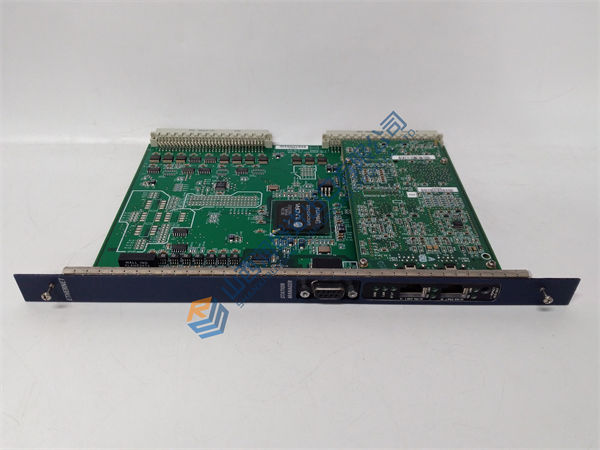Description
The D5091S GMI is a high-integrity, single-channel isolated safety barrier from GMI (General Monitors Incorporated), designed to transfer digital signals from a safe area to a hazardous area. This module provides galvanic isolation, ensuring the intrinsic safety of field devices in potentially explosive environments.
Application Scenarios
Imagine a critical chemical processing plant where precise monitoring of valve status in a Zone 0 hazardous area is paramount for safety and operational efficiency. Traditionally, connecting these sensors to the central control system in the safe area could introduce significant risk of ignition. However, with the D5091S GMI, engineers can reliably interface these digital signals. This isolated barrier prevents the transfer of excessive energy to the hazardous area, ensuring safe operation while providing crucial real-time feedback on valve positions, thereby preventing potential leaks or over-pressurization incidents.
Parameter
Main Parameters Value/Description Product Model D5091S GMI Manufacturer GMI (General Monitors Incorporated) Product Category Isolated Safety Barrier Input Channels 1 Output Channels 1 Input Signal Type Digital (NAMUR proximity switches or dry contacts) Output Signal Type Digital (Relay output) Isolation Voltage 1500 V AC (test voltage) Power Supply 20 to 30 V DC Operating Temperature -20°C to +60°C Mounting Method DIN Rail Certifications ATEX, IECEx, UL (potentially, confirm specific certifications)
Technical Principles and Innovative Values
- Innovation Point 1: Galvanic Isolation. The D5091S GMI employs robust transformer-based galvanic isolation. This ensures a complete electrical separation between the safe and hazardous area circuits, effectively preventing fault currents from propagating into the potentially explosive environment.
- Innovation Point 2: Universal Digital Input Compatibility. This barrier is designed to interface seamlessly with both NAMUR proximity switches and dry contact inputs, offering flexibility in sensor selection and simplifying system design.
- Innovation Point 3: High Reliability Relay Output. The inclusion of a reliable relay output in the D5091S GMI allows for direct interfacing with a wide range of control system inputs, providing a robust and dependable signal transmission path.
- Innovation Point 4: Compact and Rugged Design. The module boasts a space-saving DIN rail mountable design and a robust enclosure suitable for demanding industrial environments, ensuring long-term operational stability. 1
1. D5091S G.M. International s.r.l.
Application Cases and Industry Value
In a large-scale offshore oil and gas platform, the GMI D5091S plays a vital role in monitoring the status of numerous emergency shutdown (ESD) valves located in hazardous zones. Previously, maintaining the integrity of these safety circuits was a complex and time-consuming task. By implementing the GMI D5091S, the platform operators achieved a significantly higher level of safety and reliability. The clear and isolated digital signals transmitted by the D5091S ensure the control system receives accurate valve status information, enabling swift and reliable activation of safety protocols in critical situations. This not only minimizes the risk of accidents but also reduces downtime associated with troubleshooting faulty signal transmissions, leading to substantial cost savings and enhanced operational efficiency.
Related Product Combination Solutions
- GMI D1091S: A single-channel isolated barrier with a different output type (e.g., active driver output) for interfacing with other types of control system inputs. It complements the D5091S GMI in systems requiring diverse output interfaces.
- GMI C3051A: A loop-powered isolator for analog signals (e.g., 4-20 mA) from hazardous areas. This can be used alongside the D5091S GMI for comprehensive process monitoring, handling both digital and analog signals.
- GMI S9000 Series Gas Detectors: These detectors, often located in the same hazardous areas as the monitored valves, can provide digital fault signals that can be safely transmitted to the control room via the D5091S GMI, creating an integrated safety monitoring system.
- ProSoft Technology Modbus Communication Modules: If the central control system utilizes Modbus, a ProSoft Technology module can be used to efficiently integrate the digital signals received from the D5091S GMI into the Modbus network.
- HIMA HIMatrix F35: As a safety-certified PLC, the HIMatrix F35 can reliably receive the safety-critical digital signals transmitted by the D5091S GMI for processing and executing safety functions.
- ABB AC500 PLC: This versatile PLC can be used in the safe area to receive the digital outputs from the D5091S GMI for general control and monitoring purposes.
- DIN Rail Power Supplies (e.g., from Phoenix Contact or Weidmüller): A reliable power supply is essential for the D5091S GMI to function correctly. Selecting a high-quality DIN rail power supply ensures stable operation.
- Field Junction Boxes (Ex d or Ex e rated): These enclosures provide a safe termination point for field wiring in hazardous areas before connecting to the D5091S GMI, ensuring overall system safety.
Installation, Maintenance, and Full-Cycle Support
Installation of the D5091S GMI is straightforward, typically involving secure mounting on a standard DIN rail within a suitable control cabinet in the safe area. Wiring connections for the field device and the control system are clearly documented in the product manual, emphasizing the importance of adhering to intrinsic safety wiring guidelines. The robust design of the D5091S GMI minimizes routine maintenance requirements, generally limited to periodic visual inspections for any signs of damage or loose connections. In the event of a fault, clear LED indicators on the module often aid in quick diagnostics. GMI is committed to providing comprehensive technical support, including detailed product documentation, application notes, and access to experienced engineers for troubleshooting assistance. Spare parts are readily available to ensure minimal downtime.








